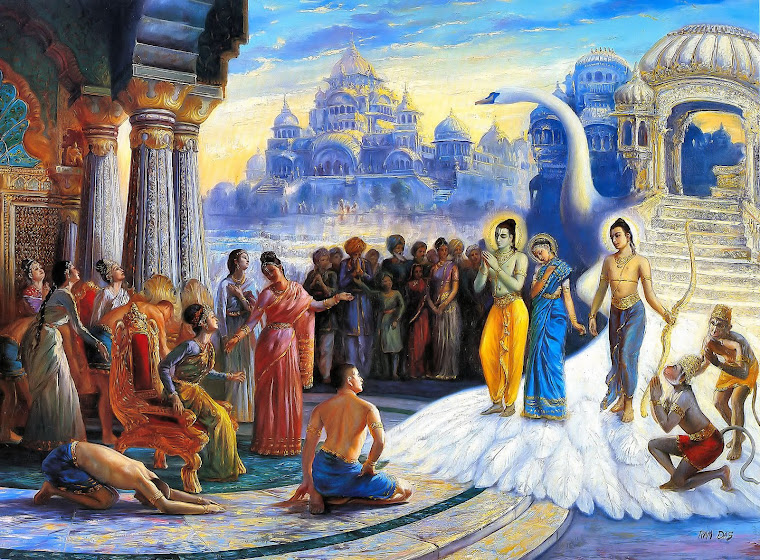Sunday 20 September 2020
evil
Philosophers, theologists, and religious preachers have all tried to ponder over the problem of evil without any convincing conclusion. The problem of evil has existed since times immemorial and many of the misdeeds of the evil-doers may sound eerily contemporary. The conception of time in Hindu religious thought talks about four eras — Satyug, Treta, Dwapar, and Kalyug. It has been prophesied that Kalyug, the present time, will be the worst in terms of righteousness or dharma and there will be evil abounding all around.
In the Ramayana, there is a detailed dialogue between Garuda and Kakabhushundi on this subject. Instances have been quoted predicting what the scenario will be like. And yes, the scenario is very much like what was predicted. But let us examine the problem of evil. Was it not there in the SatyugIJ It was and no less than what we see today. The forces representing evil were the rakshasas or the demons doing whatever they felt like, and the good, the sanyasis, were suffering at their hands. That was Satyug, the era of truth. Then came Treta, the second era. The situation was no better. Evil forces represented by Ravana and his ilk did the same things their predecessors in the Satyug had done. The third era that followed was the Dwapar or the era of Mahabharata and Krishna. The evil forces were again doing the same things that were done during the earlier periods. In Dwapar, the forces of evil were represented by Kansa and his ilk who again were perpetrating evil. So from Satyug represented by Hiranyakashap to Treta symbolised by Ravana to Dwapar epitomised by Kansa, the evil persisted. Kalyug, of course, is witnessing the same. So this fight between the good and evil is eternal, irrespective of any religion or time. Even in the Old Testament it was the Satan responsible for catalysing the ‘Paradise lost’. And of course, the first time that crime visited the earth was in the form of a murder, brother Cane killing Abel out of sheer envy. The New Testament is also a saga of treachery, bigotry and deceit. But the point is not to narrate a historical account of the problem of evil and the suffering of good down the ages. The point is to identify the reasons why evil persists. While we may identify many reasons if we observe the incidents and carry out a detailed historical analysis, the one reason behind all those reasons has been the individual and his ego, his ahankara. It was the same ahankara that drove the forces of evil in the earlier eras of Satyug, Treta, and Dwapar, and it is the same ego that is driving evil in Kalyug. This three lettered word is at the root of all evil deeds. Take a careful look around and you can understand. The answer to the problem of evil lies in understanding its nature and taming it. It apparently seems difficult because our understanding of reality is mired in a four letter word maya, the myth, which makes us believe that we are invulnerable. This false belief pushes us to evil and inebriated with ahankara, we create our own nemesis.
Subscribe to:
Posts (Atom)
Labels
- 100CroreVerses
- 2-Year-Old Is Best Friends With A Crow
- 2.0 (film)
- 6 Terrifying Ways Crows Are Way Smarter Than You Think
- 7
- Again
- Ajamila
- Akbar
- Alexander
- Allies
- app
- Appu Series
- Asvasira and Vedasira Muni
- Attractive
- Avatar
- Ayodhya
- Bhagavatham
- Bhusanda
- Bhushan
- Black and White Crow
- Book
- Boon
- cawing
- Clever as Great Apes
- Complex Cognition
- crow feeds cat and dog
- Crow Society
- Cutter
- Death ceremonies
- Dhumavati
- Disciple
- Dustbin
- evil
- FAQ
- Funeral
- Garden
- Golden
- Highest lake in the world
- Hitchcockian Crows Spread the Word About Unkind Humans
- Human tasks
- Imitate
- Investigate
- Jagannath
- Jayant
- Kaagapujandar
- Kagapujandar
- Kakabhushundi / God / Videos
- Kakasura
- language
- Language and Culture of Crows
- logical
- Management Lesson
- Manas Kak Bhusundi Ramayan - Morari Bapu
- Myth
- Narad
- Parrot
- Parrots and crows show their inventive side / More
- Planet / Tube
- Pose
- Prem
- ptrrupprecht
- Quora
- raven torah
- Redeeming
- Reunites
- River
- Romasa
- Sanitary worker
- Sarovar
- Sea
- Seven Great Questions and Great Reply
- Show advanced learning abilities
- Skill
- Something to crow about
- Speaking Tree
- Swan
- Tal
- talking raven
- Temple
- Theory Of Mind
- Times
- tokoyami
- top
- Two Vs One
- UniversetoMultiverse
- Uses sequence of three tools
- Valmiki
- Vehicle
- Vehicle of
- Verses
- Water
- Way
- Who
- Wise Road Usage
- Yoga
- Zoo
